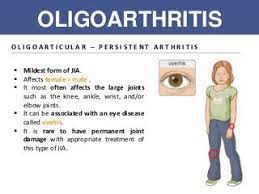In this blog, we will discuss juvenile idiopathic arthritis. Here’s a classic case. An eleven-year-old child is presenting to you after several rounds of antibiotics with a complaint of long-standing pain and swelling of fingers, wrists, and ankles. What’s the most likely diagnosis? In this case, it’s probably juvenile idiopathic arthritis, or JIA for short. JIA causes pain and swelling in the joints. It’s an autoimmune disease that primarily affects children and its typical onset is before 16 years of age.
There are three different major
types of JIA and a few smaller, less common types. The major types that are
likely to show up in an exam are Oligoarticular JIA which usually
involves fewer than six joints, Polyarticular JIA which is multiple
joints, and systemic JIA which may involve a wide variety of systemic symptoms.
There are other types of JIA too that are less common. Enthesitis-associated
JIA is a variety of JIA that causes enthesitis which is an inflammation of the
insertion around the joint. Psoriatic JIA is associated with psoriasis of the
skin. Undifferentiated JIA may be a variety of different types of JIA that
don’t really fit into one category in that particular patient. JIA
characteristics do usually involve joint inflammation. The synovium is the
target for that auto-inflammatory process. It results in the proliferation of
synovial tissue and increased joint fluid. You may see increased blood flow,
swelling, and inflammatory cells if you were to tap that joint. The progression
of symptoms generally starts off with persistent synovitis which then results
in joint destruction which can cause long-term bone, tendon, and ligament
problems.
So, of the three major types, they
tend to present slightly differently. Let’s start with Oligoarticular
JIA. This is about half of the cases. Females are more commonly affected than males
and it’s really in the two to the three-year range. It would be very rare for this
disease to present after 10 years of age. Polyarticular JIA is about a
third of cases. Again, females are more affected than males. There seem to be
two periods of time when it shows up the most, between two and five and between
ten and fourteen. Systemic JIA is the minority of cases, only about one in ten
and there’s no predominance for either gender. It can happen at any age, really
less than 17 years of age. So, let’s drill down on the three major types of
JIA.
Oligoarticular JIA is usually less than five or at least less than six joints that are affected. Those joints include medium and large joints. The disease tends to be asymmetric in how it attacks the child. It's rare that it involves the hips and this tends to be non-destructive arthritis. There are usually no systemic features. These children are afebrile and otherwise doing well. But there are two groups. If the child is ANA positive, they are more likely to have uveitis about 20% of the time. The ANA negative patients are less likely to.
Polyarticular JIA usually involves multiple joints. It can involve any joint it wants to but this disease is usually more symmetric. So, our initial case with involvement of the hands, the feet, and the ankles would be classic for a polyarticular JIA. It rarely involves the hips as well and this is destructive arthritis, unlike the oligoarticular variety. It less frequently causes uveitis. Systemic JIA may have any joints or no joints. If it involves joints, it’s often destructive arthritis. These patients usually come in complaining of high fevers daily. They may have an evanescent and salmon-pink rash. They may have hepatosplenomegaly, lymphadenopathy, or heart, lung, or liver involvement. These children have a systemic autoimmune process. Here’s an example of how children can be affected. There were two sisters. A four-year-old sister is substantially affected in terms of her ability to have functioning joints long-term. This is the chronic destruction you see in what is likely in that child, Polyarticular JIA. It’s symmetric. It’s involving multiple joints. So, when you’re diagnosing a patient, you will want to hear a history of joint pain typically, unless it’s the systemic variety that you’re suspecting.
Oftentimes, patients will have
morning stiffness or stiffness still after being still for a prolonged period
of time. We call this gelling. In other words, if a patient is just sitting
there for a while and then gets up, they have that stiffness again. These
patients often have limped especially when the lower extremities are involved.
About 25% of patients with JIA will have no report of pain and only swelling. The
massage doesn’t seem to help. Here is that salmon-pink rash, that evanescent
rash of systemic-onset JIA. It’s not always there and it doesn’t always show up
in any individual patient.




Very helpful
ReplyDelete